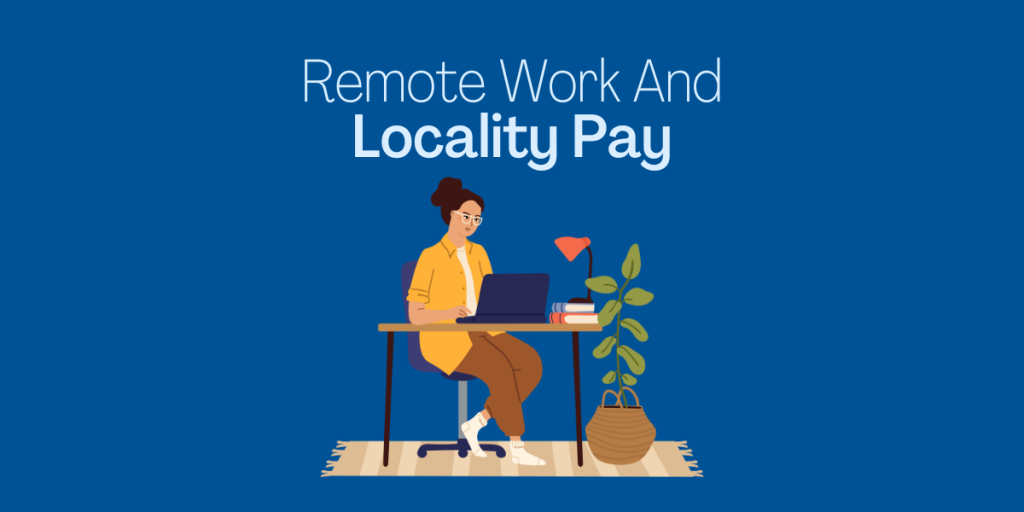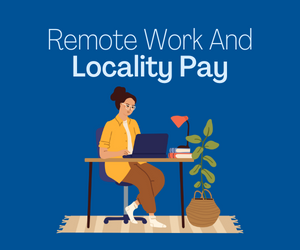Remote Work And Locality Pay


If there’s one thing that we can all guarantee in life, it’s that government regulations almost always make things more complicated than they, perhaps, ought to be.
And when it comes to remote work and the use of locality pay, there’s no doubt that things are more complicated for government workers than they need to be.
Here’s what you need to know about locality pay and remote work for the US government.
What Is Locality Pay? It’s All About Teleworking
Locality pay is the pay derived from the official location on which your government salary is based upon.
That means your locality pay area matters because people working in, say, Washington DC, get paid more than people working in Virginia, even though they may do the same job.
The idea is that the salary paid reflects the cost of living in that area.
Now, for remote work (if you’re not sure what remote work is – check out our definition and our glossary of related terms), this tends to be pretty simple – remote workers will, normally, have an “official worksite” of their home and their pay will be based on this. (Though we would note that this doesn’t mean all remote workers work from home).
But for workers with a telework agreement, things become more complicated and their official worksite can lead to them being in a different geographic locality pay area than the place they spend most of their time.
The Office Of Personnel Management Sets The Rules
These rules are not made up by individual government departments, they come from the Office of Personnel Management (OPM), which sets the rules for the entire government.
So, if you’d like to change the rules in this confusing area of human resource management, you know where to lobby.
Locality Pay Is Based On Your “Official Worksite”
However, as we’ve already said, it’s teleworkers that are going to find this the most challenging thing to get their heads around.
If you are a remote worker, your official worksite will be your home and that means you get paid based on where your home is.
For a teleworker, their official worksite is calculated as the office that they attend at least twice each biweekly pay period and that can be a bit confusing.
It means that someone living in Washington DC could telework and then attend an office at least twice each biweekly pay period in Virginia.
That would mean that their locality pay for the pay period, would be based on a lower rate than someone working in the Washington DC offices because their official worksite would be in Virginia, not DC.
Conversely, a worker teleworking from Virginia but attending meetings twice per pay period in the Washington DC office would have an official worksite of the DC office. And they would be paid more than other Virginia-based workers.
The key to this is that locality pay is based on the regular worksite of the individual. If they have no such worksite or don’t attend their regular worksite at least twice each pay period, they ought to be transferred to a different form of employment as their telework agreement is no longer effectively describing their employment relationship.
If they no longer attend a regular worksite on a regular and recurring basis? They’re a remote worker.
If they attend on more than a regular and recurring basis, the employee’s position may have changed to a regular worker.
Is This Kind Of Location-Based Pay Fair?
We don’t think that locality pay is designed to be a burden on an employee.
While their work location and their employment location may not always match up and the difference may not always be in the employee’s favor, it’s a system that allows for standardization across government departments and, perhaps, more importantly, allows for easy budgeting from any given agency worksite as they can always know how much they will need to pay for telework rather than having to agree on terms on an individual basis.
This is in stark contrast to the private sector, where we’ve seen some pretty despicable agreements based on work location, where employers try to hire skilled staff from the United States who are based in Thailand at local Thai pay rates.
That kind of work arrangement is exploitative.
Basing someone’s pay on where the employee would normally work if they were in the office full-time is a fair way to handle telework agreements on a large-scale basis.
However, it’s worth noting that remote work arrangements typically won’t fall under this approach and US government work is likely to be paid the rate for wherever you live rather than based on where a worksite is located.




